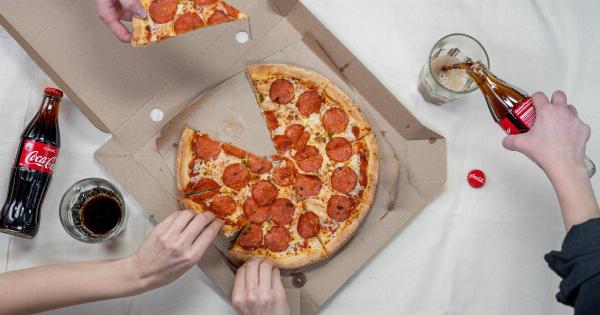Using a microwave is a convenient and time-saving way to heat up or cook food.
However, many people unknowingly make common errors when using their microwaves, which can affect the taste and texture of their meals, as well as the longevity of the microwave itself. In this article, we will explore some of these frequent errors and provide tips on how to avoid them.
1. Using the Wrong Containers
One of the most common mistakes people make is using the wrong containers in the microwave. Certain types of plastic containers, such as those labeled with recycling codes 3, 6, or 7, can release harmful chemicals when heated.
It is best to use microwave-safe glass or ceramic containers for heating or cooking food in the microwave.
2. Neglecting Stirring or Turning
When heating or cooking food in the microwave, it is important to stir or turn it to ensure even distribution of heat. Neglecting to do so can result in unevenly heated or cooked food.
Stirring soups, sauces, or other liquid-based dishes during the heating process prevents hot spots and ensures a consistent temperature throughout.
3. Overheating Liquids
Overheating liquids in the microwave can be dangerous. When liquids, such as water or milk, are heated for an extended period of time, they can suddenly erupt, causing burns.
To avoid this, it is recommended to heat liquids in short intervals, stirring in between, and using microwave-safe containers with handles.
4. Incorrect Reheating Times
Reheating leftovers is a common use for microwaves. However, many people underestimate or overestimate the time required to reheat their food, resulting in unevenly heated meals.
It is important to follow the recommended reheating times provided with the microwave or use trial and error to determine the optimal duration for your specific dish.
5. Not Using Covers or Splatter Guards
When heating food in the microwave, it can splatter and create a mess. Using microwave-safe covers or splatter guards helps contain the mess and prevents the food from drying out.
It also helps retain the moisture of the food, resulting in a more enjoyable dining experience.
6. Ignoring Power Levels
Many microwaves offer various power levels to choose from. Ignoring these power levels and always using the highest setting can lead to overcooking or overheating food.
It is important to adjust the power level according to the specific dish to ensure optimal results. Consult the microwave’s manual for guidance on which power level to use for different types of food.
7. Microwaving Non-Microwave Safe Items
Some items should never be placed in a microwave, even for a short period of time. Aluminum foil, metal utensils, and plastic bags can cause sparks or fires when exposed to microwaves.
Always check the manufacturer’s instructions or packaging to determine if an item is microwave safe before using it.
8. Improper Defrosting Techniques
When defrosting food in the microwave, it is essential to use the correct techniques to avoid partial cooking or bacterial growth.
Use the microwave’s defrost setting, or if it doesn’t have one, set it to low power and regularly check and rotate the food to ensure even thawing. Avoid leaving defrosted food at room temperature for extended periods.
9. Neglecting Regular Cleaning
A clean microwave not only looks better but also performs better. Neglecting regular cleaning can result in unpleasant odors, food residue build-up, and even contamination.
Wipe down the interior of the microwave with a mild detergent regularly, especially after any spills or stains.
10. Not Following Manufacturer’s Instructions
Each microwave model may have specific instructions or recommendations for use. It is crucial to read and follow the manufacturer’s instructions to ensure safe and efficient operation.
Familiarize yourself with the features and settings of your microwave for optimal results and longevity.
Conclusion
By avoiding these frequent errors, you can maximize the performance and lifespan of your microwave, while also enjoying better-tasting meals.
Always prioritize safety by using microwave-safe containers, following recommended heating and defrosting techniques, and paying attention to the manufacturer’s instructions. With proper care and knowledge, your microwave can continue to be a reliable kitchen companion for years to come.




























